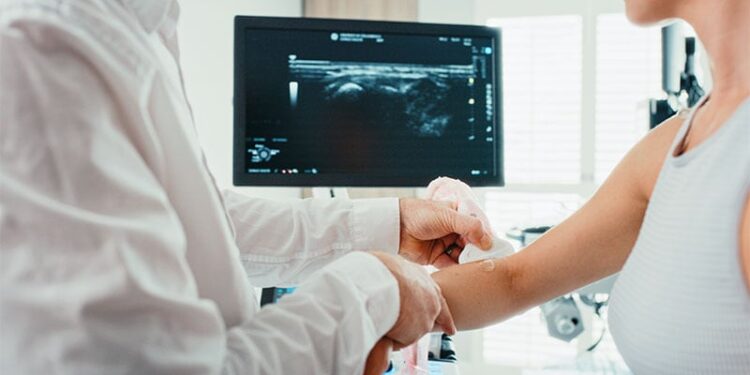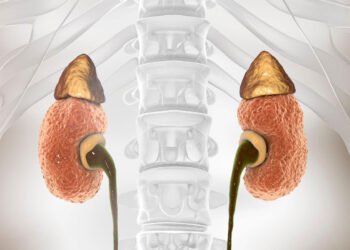TOPLINE:
Clinical assessment combined with musculoskeletal ultrasound examination revealed distinct phenotypes in difficult-to-treat psoriatic arthritis (PsA), with a greater inflammatory burden and more aggressive disease being observed in those with persistent inflammatory PsA than in those with non-inflammatory PsA.
METHODOLOGY:
- Researchers conducted a cross-sectional study between March and December 2024 at two Italian centres to differentiate patients with persistent inflammatory from non-inflammatory PsA using clinical examinations and ultrasound in a cohort of patients with difficult-to-treat PsA.
- They included 517 adults diagnosed with PsA who received treatment with biologic and/or targeted synthetic disease-modifying antirheumatic drugs (b/tsDMARDs), with difficult-to-treat PsA being defined by an inadequate response to two or more classes of b/tsDMARDs and persistent disease activity (n = 53; median age, 59 years; 64% women).
- Clinical evaluations and musculoskeletal ultrasound were used to identify and analyse active disease sites.
- Among patients with difficult-to-treat PsA, persistent inflammatory PsA was characterised by ultrasound-detected ongoing inflammation in at least one clinically active site, and non-inflammatory PsA involved having no ongoing inflammation at any clinically active site.
TAKEAWAY:
- Among patients with PsA who met the criteria for difficult-to-treat PsA, 57% had persistent inflammatory PsA and 43% had non-inflammatory PsA.
- Persistent inflammatory vs non-inflammatory PsA involved higher swollen joint counts (median, 2.5 vs 0.0; P < .001) and a higher prevalence of dactylitis (6 vs 0 patients; P = .030) and nail psoriasis (40% vs 13% of patients; P = .027); non-inflammatory PsA involved more tender points, greater patient-physician discordance in assessments, and higher entheseal tenderness (P < .05 for all).
- Ultrasound examination of patients with persistent inflammatory vs non-inflammatory PsA revealed higher musculoskeletal ultrasound activity scores (3.81 vs 0.91) and structural damage scores (4.12 vs 2.38; P < .001 for both).
- Patients with persistent inflammatory PsA had a higher number of active synovitis, paratenonitis, and tenosynovitis than those with non-inflammatory PsA (P < .01 for all).
IN PRACTICE:
“We believe that the integration of clinical and imaging findings may be crucial for selecting patients for novel therapies, particularly in cases of apparent inadequate response to PsA treatment,” the authors of the study wrote.
SOURCE:
This study was led by Alen Zabotti, University of Udine, University Hospital Santa Maria della Misericordia, Udine, Italy. It was published online on August 14, 2025, in RMD Open.
LIMITATIONS:
The cross-sectional design of this study prevented the assessment of longitudinal outcomes. The lack of validated definitions for difficult-to-treat PsA may have affected result interpretation. The sample size of the difficult-to-treat PsA population after stratification into subgroups was relatively small.
DISCLOSURES:
This study did not receive any specific funding from any agency. One author acknowledged receiving funds from the Leeds UK National Institute for Health and Care Research Biomedical Research Centre. The authors declared having no competing interests.
This article was created using several editorial tools, including AI, as part of the process. Human editors reviewed this content before publication.
Source link : https://www.medscape.com/viewarticle/ultrasound-may-help-differentiate-difficult-treat-psoriatic-2025a1000m3o?src=rss
Author :
Publish date : 2025-08-25 12:00:00
Copyright for syndicated content belongs to the linked Source.











